Macrokiller (clodronic acid encapsulating liposome)
Disease research tools for cancer, Alzheimer's, allergy, etc.
Intended use
Clodronate is one of the bisphosphonates and is known as a therapeutic drug for osteoporosis. It depletes osteoclasts by inhibiting ATP metabolism as an intracellular ATP analogue. Clodronic acid also has a cell-killing effect on macrophages such as osteoclasts and microglia, but clodronic acid alone has the disadvantage that its effect is low because the amount taken up by macrophages is small.
By encapsulating clodronic acid in liposomes, this product can improve macrophage phagocytosis efficiency and cell permeability, making it possible to increase the cell-killing effect compared to clodronic acid alone. It has been reported that macrophages are involved in many diseases such as cancer, Alzheimer's disease, and allergy.
Composition
| Catalog Number | Product name | capacity |
| PMC-MKV300 | Macro Killer V300 | Macrokiller V300 1 mL x 1 (clodronic acid concentration 10 mg/mL, average particle size 300 nm) 1 mL empty liposome for control |
Product Characteristics/Uses
- Strong macrophage recognition and easy phagocytosis. If the target macrophage is liver, pancreas, etc., it can be used by intraperitoneal administration.
- Try using 0.05 to 0.2 mL for each mouse. In both cases, excise the research tissue after 24 to 48 hours and evaluate immunostaining, gene expression, etc.
Product data
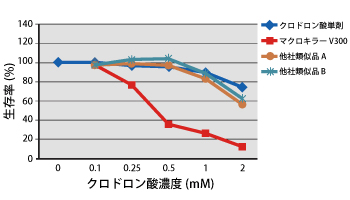
Fig. 1 Performance comparison between Macrokiller V300 and similar products from
other companies We examined the effects of macrokiller, clodronic acid alone, and similar products from other companies on the mouse macrophage cell line RAW264.7. RAW264.7 cells were exposed to each reagent for 1 hour and cell viability was measured after 48 hours of incubation.
As a result, it was found that Macrokiller has a higher cell-killing effect than clodronic acid alone and similar products from other companies, and the efficiency of clodronic acid uptake into cells is high.
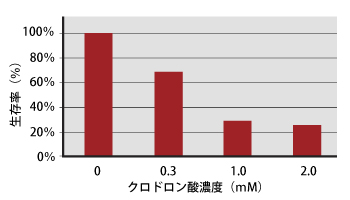
Figure 2 Cell-killing effect of Macrokiller V300 on
primary microglia Primary microglia (see related products) were exposed to Macrokiller for 1 hour, and cell viability was measured after 48 hours.
As a result, the cell viability of microglia decreased in a concentration-dependent manner, confirming that it is also effective against microglia.
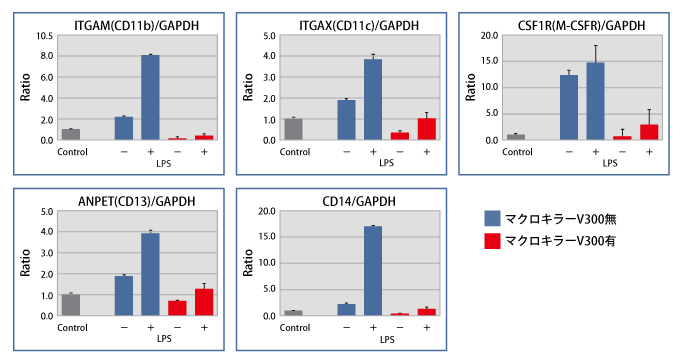
Figure 3. Changes in gene expression in visceral adipocyte/macrophage co-culture system by Macrokiller V300 Macrokiller was exposed to
visceral adipocyte (see related products)/macrophage co-culture system for 1 hour and cultured for 2 days. Furthermore, we added LPS and cultured the cells for 2 days, and analyzed the gene expression using the real-time PCR method.
As a result, we were able to confirm that the gene expression levels of all five types of monocyte/macrophage marker genes (CD11b/c, CD13, CD14, M-CSFR) decreased, indicating that macrophages were depleted by macrokillers.
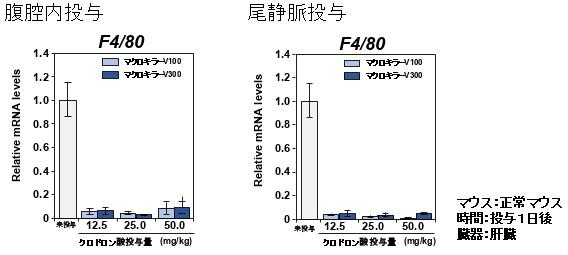
Fig. 4 Effects of
different doses of macrokiller on macrophage marker gene expression. Expression of the marker gene (F4/80) was analyzed by real-time PCR. After intraperitoneal administration (left) and tail vein administration (right), macrokiller administration decreased the expression of F4/80 compared to the untreated group at all concentrations. (The amount of relative mRNA is quantified using GAPDH as an internal standard, and the expression level of each gene is shown when the untreated group is set to 1)
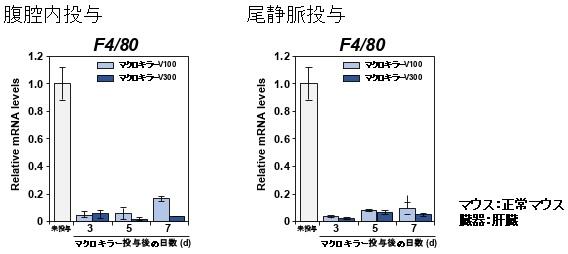
Figure 5. Changes in expression of macrophage marker genes after administration of
Macrokiller Real-time expression of macrophage marker genes in the liver 3, 5, and 7 days after intraperitoneal or tail vein administration of Macrokiller V100 and V300 (50.0 mg/mL). Analyzed by PCR. Macrokiller administration decreased F4/80 expression compared to the untreated group up to 7 days after intraperitoneal (left) and tail vein (right) administration. (The amount of relative mRNA is quantified using GAPDH as an internal standard, and the expression level of each gene is shown when the untreated group is set to 1)
| Catalog Number | Product Name | Size |
| PMC-MKV300 | Macrokiller V300 | 1 Set |
